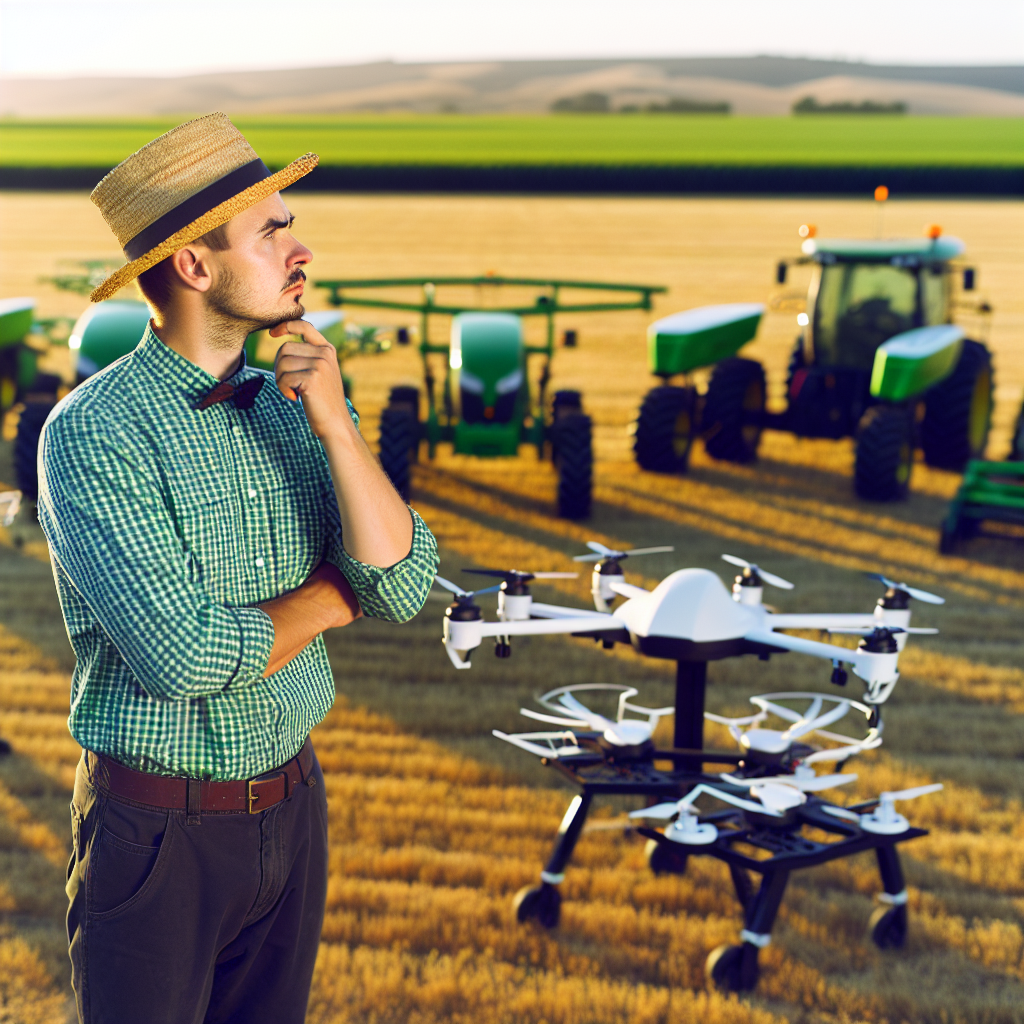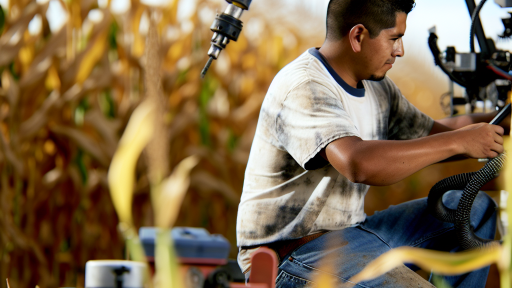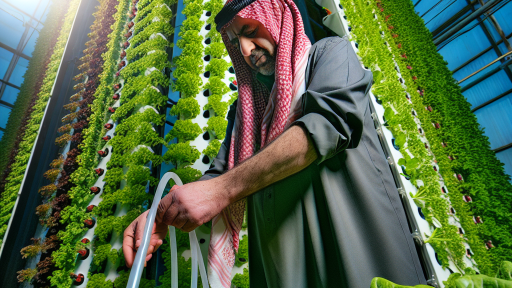Understanding the Benefits of Automated Equipment in Modern Farming
Increased Efficiency
Automated equipment boosts farm efficiency significantly.
By reducing manual labor, it allows farmers to focus on strategic tasks.
This technology speeds up operations and increases productivity.
Moreover, farmers can accomplish more work in less time.
Cost Savings
Investing in automated equipment can lead to substantial cost savings.
Initially, the investment may seem high.
However, reduced labor costs and increased efficiency provide a return on investment.
Additionally, automated equipment often lowers maintenance expenses over time.
Precision and Accuracy
Automation improves precision in various farming operations.
For instance, automated planting systems ensure consistent seed placement.
This accuracy leads to better crop yields and resource management.
Furthermore, automated irrigation systems optimize water usage effectively.
Data Collection and Analysis
Automated systems can collect critical data for farmers.
This data helps in making informed decisions about crops.
Farmers can analyze weather patterns, soil conditions, and market demands.
Transform Your Agribusiness
Unlock your farm's potential with expert advice tailored to your needs. Get actionable steps that drive real results.
Get StartedConsequently, this analysis guides improvements and adjustments in farming practices.
Labor Management
Automated equipment helps manage labor effectively.
With fewer workers needed, farmers can reduce staffing challenges.
This independence from manual labor also mitigates labor shortages.
Additionally, it allows farmers to allocate their workforce more strategically.
Environmental Benefits
Using automated equipment can reduce environmental impact.
For example, precision agriculture minimizes chemical use.
Less pesticide application benefits both health and ecosystems.
Moreover, automated systems can monitor and manage resources more sustainably.
Assessing Your Farm’s Specific Needs and Goals
Identifying Farm Type and Size
Begin by identifying your farm type.
This could be crop production, livestock, or mixed farming.
Next, assess the farm’s size.
The scale impacts the type of equipment needed.
For instance, small farms may require simpler, cost-effective solutions.
In contrast, larger farms often benefit from advanced automated systems.
Establishing Production Goals
Clearly define your production goals.
Consider what you aim to achieve in the coming years.
Are you looking to increase yield, reduce labor costs, or improve efficiency?
Understanding these goals helps direct your equipment choices.
For example, a focus on yield may lead you to invest in precision farming tools.
Evaluating Available Resources
Examine the resources you currently have.
This includes financial, human, and technological resources.
Determine your budget for new equipment.
A realistic budget avoids overspending.
Showcase Your Farming Business
Publish your professional farming services profile on our blog for a one-time fee of $200 and reach a dedicated audience of farmers and agribusiness owners.
Publish Your ProfileAdditionally, assess your team’s skills.
Ensure they can operate and maintain new technology.
Consider seeking training if your staff lacks expertise in using advanced equipment.
Understanding Local Conditions
Factor in your local environmental conditions.
Soil type, climate, and topography influence equipment selection.
For instance, sandy soils may require different equipment than clay-heavy fields.
Additionally, look into potential weather challenges in your area.
This knowledge will guide you toward the most suitable automated solutions.
Consulting Experts and Peers
Seek advice from agricultural consultants.
Their expertise can provide valuable insights.
Engage with fellow farmers as well.
They can share experiences with specific equipment.
Attend agricultural shows or expos.
These events showcase the latest technology and innovations.
Networking helps you stay informed about what works best in your farming community.
Making a Long-Term Plan
Finally, create a long-term equipment strategy.
Anticipate future needs and advancements.
Consider how technology may evolve in the coming years.
This foresight ensures your equipment remains relevant and effective.
Involve your team in planning to gather diverse perspectives and ideas.
Types of Automated Equipment Available for Different Farming Practices
Overview of Automated Equipment
Automated equipment revolutionizes farming practices.
Farmers can drastically improve efficiency and reduce labor costs.
This technology spans a variety of applications and systems.
Precision Agriculture Tools
Precision agriculture tools enhance crop yield through data.
They utilize sensors, drones, and satellite imagery.
Farmers can monitor soil health and crop conditions in real-time.
Additionally, these tools help in making informed decisions.
Some popular precision tools include:
- GPS-guided tractors
- Drones for field monitoring
- Soil moisture sensors
Automated Irrigation Systems
Automated irrigation systems optimize water usage effectively.
They reduce waste and promote more sustainable practices.
Common systems include drip irrigation and sprinklers.
Farmers can manage these systems remotely via mobile apps.
Furthermore, they can adjust schedules based on weather forecasts.
Harvesting and Planting Equipment
Modern harvesting and planting equipment streamlines operations.
These machines speed up the process significantly.
For instance, combine harvesters can efficiently gather harvests.
Likewise, automatic planters ensure precise seed placement.
Both types of equipment minimize human error and boost productivity.
Livestock Management Tools
Automated livestock management tools enhance animal welfare.
These tools help monitor health and productivity levels.
Showcase Your Farming Business
Publish your professional farming services profile on our blog for a one-time fee of $200 and reach a dedicated audience of farmers and agribusiness owners.
Publish Your ProfileTechnologies such as RFID collars track animal movements.
Automated feeders provide consistent nutrition to livestock.
This ensures animals receive the proper care more efficiently.
Post-Harvest Processing Equipment
Post-harvest processing equipment facilitates safe food production.
These tools handle sorting, cleaning, and packing crops.
They help maintain quality standards across the board.
Additionally, automation reduces the risk of human contamination.
Examples include:
- Automated sorting machines
- Packaging lines
- Fruit and vegetable cleaners
Choosing the Right Equipment
Selecting the appropriate automated equipment depends on various factors.
Farm size and type of crops should guide your decision-making.
Additionally, consider technological compatibility with existing systems.
Assess your budget and the return on investment.
Consulting with agricultural specialists can provide valuable insights.
Uncover the Details: Monitoring Soil Health Using Remote Sensing
Evaluating the Cost vs. ROI of Automated Equipment
Understanding the Initial Investment
Purchasing automated equipment requires assessing the initial cost.
Consider not only the purchase price but also installation and setup expenses.
These factors significantly affect your overall budget.
Calculating Return on Investment
Calculating ROI helps you understand the financial benefits of automation.
Start by estimating cost savings from labor reduction.
Next, include potential yield increases due to improved efficiency.
Timeframes for ROI Realization
The timeframe for realizing ROI can vary widely.
Short-term benefits may arise from decreased labor costs.
However, some automated systems may take longer to pay off.
Understanding these timelines is crucial for planning your budget.
Evaluating Longevity and Maintenance Costs
Long-term investment in automated equipment must account for maintenance.
Regular upkeep affects both operational costs and equipment lifespan.
A well-maintained system can yield better long-term ROI.
Benefits Beyond Cost
Consider benefits that go beyond cost savings.
Automated equipment can improve accuracy in farming practices.
It also enhances productivity, giving farmers a competitive edge.
Additionally, automation can free up time for strategic planning.
Case Studies and Real-Life Examples
Reviewing case studies can provide valuable insights.
For instance, Green Valley Farms adopted automated irrigation systems.
This change resulted in a significant reduction in water waste.
Another example is Blue Sky Agriculture, which improved crop yields through automation.
These examples illustrate the tangible benefits of investing wisely.
Uncover the Details: Advanced Technologies Enhancing Vertical Farming Practices
How to Research and Compare Brands and Models of Automated Equipment
Defining Your Needs
Start by assessing the specific needs of your farm.
Consider the type of crops or livestock you manage.
This understanding guides your selection process.
Showcase Your Farming Business
Publish your professional farming services profile on our blog for a one-time fee of $200 and reach a dedicated audience of farmers and agribusiness owners.
Publish Your ProfileExploring Different Brands
Research a variety of brands within the automated equipment sector.
Popular manufacturers include AgLeader, Trimble, and John Deere.
Each brand offers unique features and support services.
Read customer reviews to gain insights into reliability and functionality.
Comparing Features and Specifications
Make a list of key features that are important for your operations.
Look for equipment that offers automation functions.
For example, consider planting depth control and irrigation management.
Compare the specifications of similar models across different brands.
Evaluating Costs
Assess your budget before beginning your comparison.
Compare prices among brands and models to find the best deal.
Don’t forget to factor in maintenance and operating costs.
Some equipment may be more costly upfront but save money long-term.
Requesting Demonstrations and Trials
Reach out to manufacturers for product demonstrations.
Participate in trials to see equipment in action on your farm.
This practical experience is invaluable for decision-making.
Also, speak with local farmers who use similar equipment.
Checking for Warranty and Support
Review the warranty offered with each product.
Consider the manufacturer’s customer support as well.
Good customer service can save you time and money in the future.
Finalizing Your Decision
After thorough research, summarize your findings.
Weigh the pros and cons of each option.
Finally, choose the equipment that best fits your farm’s needs.
Delve into the Subject: Automated Machinery for Farm Logistics and Supply

The Importance of Ease of Use and Maintenance in Your Equipment Choice
Prioritizing User-Friendly Equipment
Selecting equipment that is user-friendly enhances farming efficiency.
Farmers should consider how quickly they can learn to operate new machines.
Intuitive designs save time and reduce frustration during operation.
Consequently, equipment that requires minimal training can boost productivity.
Considering Maintenance Requirements
Regular maintenance is essential for the longevity of automated equipment.
Heavy-duty machines should have straightforward maintenance schedules.
Easy access to parts simplifies the repair process.
Moreover, consider the availability of service and support in your area.
Assessing Long-Term Costs
Initial costs are important, but long-term savings matter too.
Ease of maintenance often leads to reduced repair costs over time.
Additionally, less downtime provides a higher return on investment.
Farmers should weigh upfront costs against potential long-term benefits.
Evaluating Product Reviews
Reviews from other farmers offer invaluable insights into equipment performance.
Look for feedback on usability and maintenance experiences.
Real-world experiences can highlight issues not mentioned in product descriptions.
Selecting well-reviewed equipment can lead to better long-term satisfaction.
Discover More: Automated Machinery for Efficient Irrigation Systems
Showcase Your Farming Business
Publish your professional farming services profile on our blog for a one-time fee of $200 and reach a dedicated audience of farmers and agribusiness owners.
Publish Your ProfileIdentifying Technology Integration
Understanding Compatibility
When selecting automated equipment, compatibility is critical.
Each piece of equipment must seamlessly integrate with your existing systems.
For instance, consider the software requirements of new machinery.
Ensure that it works well with your current management solutions.
Additionally, check hardware compatibility between devices.
Evaluating Software Options
Software plays a pivotal role in equipment performance.
Choose software that supports real-time data analysis.
This capability enhances decision-making processes on the farm.
Moreover, prioritize platforms with user-friendly interfaces.
Ease of use will save time during training sessions.
Examining Hardware Features
Examine the technical specifications of potential hardware.
Durability should be a primary concern in equipment selection.
Weather-resistant materials are beneficial for outdoor use.
Likewise, focus on energy efficiency for cost savings.
Smart technology features can optimize farm operations.
Checking Manufacturer Support
Reliable manufacturers often offer excellent support services.
Evaluate warranty options and maintenance plans available.
Consider partnerships with companies known for responsive service.
This factor can save you time and money down the line.
Conducting Field Tests
Field tests can provide valuable insights into equipment performance.
Invite representatives for demonstrations on your farm.
Observe how well the equipment works in actual conditions.
Take note of its effectiveness in various tasks.
Your evaluation will empower you to make informed decisions.
Future Trends in Agricultural Automation and Their Implications for Farmers
Adoption of Smart Farming Technologies
Farmers increasingly adopt smart farming technologies to enhance productivity.
IoT devices collect real-time data on soil and crops.
Farmers can make informed decisions based on data analytics.
This trend allows for precision agriculture, maximizing yield with minimal resources.
Technologies like drones and sensors monitor crop health and field conditions.
Integration of Artificial Intelligence
Artificial Intelligence (AI) plays a pivotal role in agriculture’s future.
AI systems analyze data, predicting crop performance and optimizing inputs.
Farmers can reduce costs and waste through better planning.
Automation of routine tasks enhances labor efficiency on the farm.
AI-driven machinery improves accuracy in planting and harvesting.
Increased Focus on Sustainability
Sustainable practices are gaining traction in agricultural automation.
Farmers seek eco-friendly solutions to combat climate change.
Automated systems help reduce pesticide and fertilizer application.
This shift promotes healthier ecosystems and higher-quality produce.
Challenges and Considerations
While automation offers numerous benefits, challenges exist.
High initial investments may deter some farmers from adopting new technologies.
Showcase Your Farming Business
Publish your professional farming services profile on our blog for a one-time fee of $200 and reach a dedicated audience of farmers and agribusiness owners.
Publish Your ProfileTraining and skill development are crucial for effective implementation.
Farmers must also navigate data privacy and cybersecurity concerns.
Collaboration and Knowledge Sharing
Collaboration among farmers is essential for successful automation.
Sharing experiences and resources can reduce implementation costs.
Networking opens opportunities for joint ventures and technology exchange.
Local agricultural extension services can provide valuable support.
Looking Ahead
The future of agricultural automation appears promising and innovative.
Continued advancements will enhance efficiency and sustainability.
Farmers must remain adaptable to keep pace with technological changes.
The next decade will likely reshape agriculture into a more automated industry.
Additional Resources
Precision Agriculture in the Digital Era: Recent Adoption on U.S. Farms
25 Best Colleges for Precision Agriculture – Global Ag Tech Initiative




